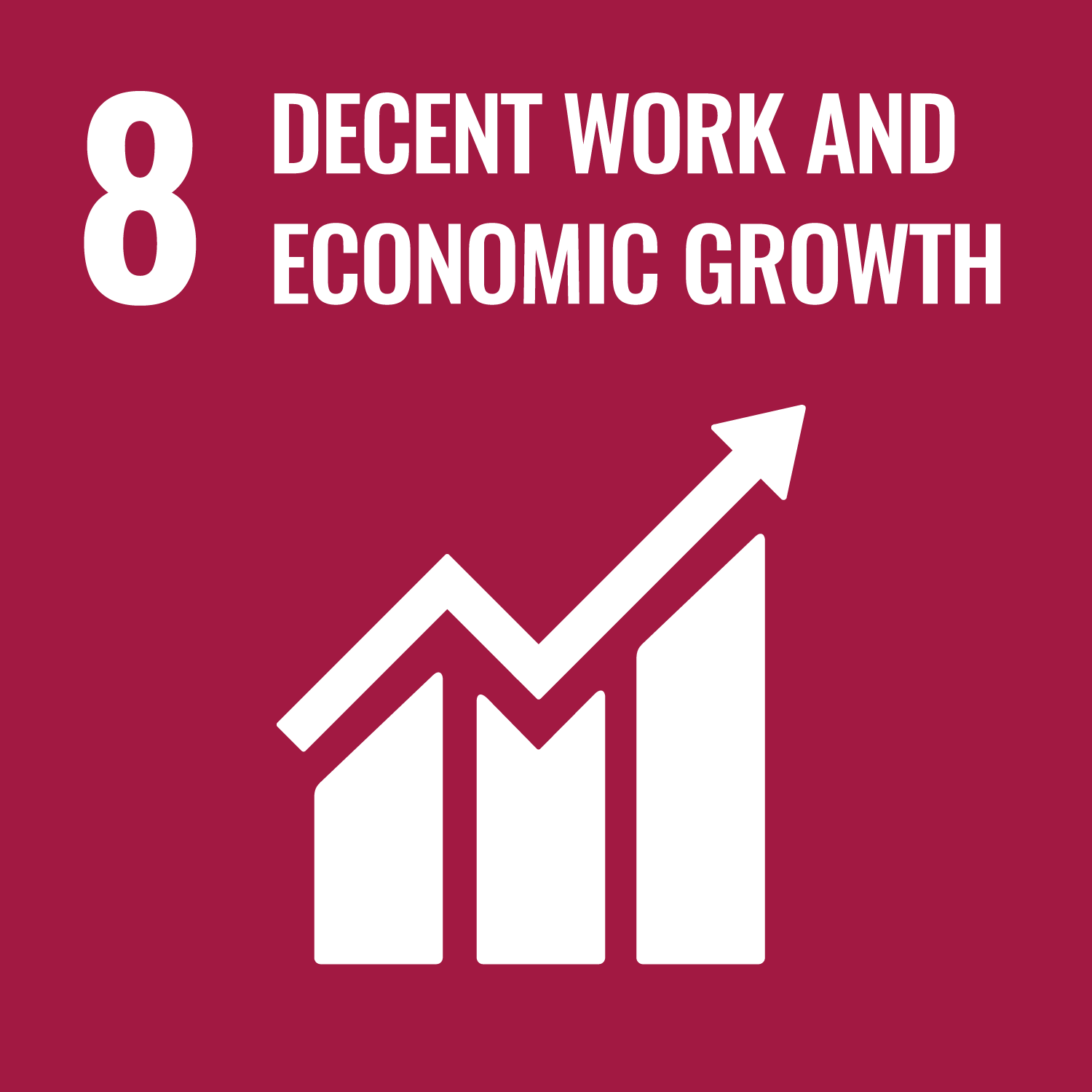
- Impact bond
- Health and wellbeing
- Employment and training
- UK
United Kingdom
4 mins
Mental Health and Employment Partnership (MHEP)
Last updated: 2 Sep 2022
- Mental Health and Employment Partnership (MHEP)
- SDGs and project locations
- INDIGO Key facts and figures
- Target population
- The problem
- The solution
- The impact
- Outcomes framework
- Project insights
- Downloads and resources
- Mental Health and Employment Partnership (MHEP)
- SDGs and project locations
- INDIGO Key facts and figures
- Target population
- The problem
- The solution
- The impact
- Outcomes framework
- Project insights
- Downloads and resources
MHEP involves five place-based outcomes contracts (i.e., five SIB projects) that support people experiencing mental health issues or learning disabilities to find and remain in competitive, paid work in the UK.
Project Location
Aligned SDGs


INDIGO Key facts and figures
-
INDIGO projects
-
Commissioner
-
Intermediary
-
Investor
-
Provider
-
Funds
-
Capital raised (minimum)
-
Service users
1k+
The problem
People with severe or specific learning difficulties, autism and mental health conditions have the lowest employment rates in the UK (ONS, 2022). According to the Office for National Statistics (ONS), in the first quarter of 2021, people with mental illness had an employment rate that was 28.8 percentage points lower than the general population (ONS, 2021). Furthermore, only approximately 8% of people in contact with secondary mental health services are in paid work, despite studies showing 30-50% being capable of work (Schneider 1998; Scheider et al., 2003; Waddell and Burton, 2006). However, employment is strongly associated with good physical and mental health and well-being, including for people with mental health and disability.
The solution
The Mental Health and Employment Partnership was set up in 2015 to drive a large-scale expansion of high-quality supported employment programmes for people with mental health issues and other groups with health conditions and disabilities (Gadenne et al., 2020).
MHEP is a special purpose vehicle run by Social Finance, with investment from Big Issue Invest. Originally backed by outcome fund support from the Commissioning Better Outcomes Fund and Social Outcomes Fund, MHEP began as three SIBs in Tower Hamlets, Haringey, and Staffordshire. Currently, there are five MHEP SIB projects now supported by the Life Chances Fund and which are in scope for GO Lab’s longitudinal evaluation. These include: Haringey and Barnet, Shropshire, Enfield, Tower Hamlets (Mental Health), and Tower Hamlets (Learning Disabilities).
The service provided through the Mental Health and Employment Partnership is based on the Individual Placement Support (IPS) model, which has been subject to rigorous national and international research demonstrating impact and is underpinned by a well-defined operating model. The service is based on a ‘place then train’ model which is thought to be more effective than traditional approaches such as vocational training and sheltered work that are mainly formed around a ‘train and place’ model.
The impact
MHEP’s target outcomes are job starts (primary outcome), job sustainment (secondary), and engagement with service (intermediary outcome). By the end of 2021 in the 5 LCF sites, MHEP had supported 392 people with severe mental illness or learning disability into starting paid work, 192 into job sustainment and 1322 into engagement with the service. As outlined in Table 1-3 is the CBO Evaluation of MHEP’s sites from 2015-2018. GO Lab’s evaluation report of the 5 SIB projects receiving LCF outcome funding will be published later this year.
Table 1: Total outcome payments for MHEP projects under CBO 2014-2018

Table 2: Summary of MHEP projects under CBO 2015-2018’s engagement progress, actual number engaged (#) and percentage of planned volumes for those data point (%)

Table 3: Summary of MHEP projects under CBO’s outcome progress, actual number of outcomes achieved (#) and percentage of target (%), for date points volumes for those data points with period 2014-2018

Outcomes framework
- Successful engagement of users
- Job start
- Job sustainment (<16 hours/week)
- Job sustainment (>16 hours/week)
Project insights
Additional Performance Monitoring
Service providers benefited from MHEP’s strong performance monitoring as well as analytical expertise on IPS. This includes detailed reports and data dashboards, which are regularly reviewed as part of contract review meetings. Providers find that the level of granularity and presentation of information are beyond what is typically available, which enables earlier and more precise identification of problems within their MHEP-supported services. Once problems were identified, MHEP could often suggest concrete solutions.
The data analysis and intelligence MHEP provides is often seen as over and above what stakeholders could normally access in traditional commissioning. Although projects were used to working towards similar outcome measures, MHEP’s performance management function was seen to drive additional focus on achieving outcomes.
Solution-Orientated Collaboration
MHEP’s SIB approach is seen as a different way of working and commissioning compared to other contracts. Providers feel that this collaboration allows them to work closely with MHEP, in engaging in a continuous conversation on local resourcing, co-location of employment specialists, and performance challenges.
MHEP is described as a conduit between providers and local commissioners and plays a strong role in identifying new opportunities in making connections. Providers speak highly of the working culture within the partnership and found its ‘business-approach’ more effective than the one within local authorities. Additionally, collaborative working with regular communication/meetings and additional specialist input helped gain a detailed understanding of the IPS services, which is usually not available during implementation. In fact, MHEP’s IPS specialist was seen as fundamental in supporting thinking through solutions to any problems.
Advocating for IPS and additional financial resources
MHEP SIB approach are described as providing additional advocacy support in the form of signposting to relevant opportunities and funding, leading multi-stage Life Chance Fund applications, and advocating for IPS and high-impact services.
For commissioners, one of MHEP’s most cited contributions was to help projects apply for and unlock additional financial resources through the Life Chances Fund (LCF). The MHEP team led the multi-stage LCF applications for projects. By assuming responsibility for this process, MHEP protected projects from the administrative burden involved. Similarly, providers feel they are alerted to funding opportunities and NHS resources and appreciated its professionalism in highlighting these resources. For example, MHEP assisted a provider through a period of low referrals by signposting them to opportunities for promoting their services, guided them on hosting trust-wide employment events, and connected them to relevant stakeholders.
Initial learning curve
The social impact bond contract with MHEP was generally perceived as complex and distinct from traditional contracting arrangements. Initially, providers found the structure to be very complicated and did not fully understand it despite being in implementation. Similarly, commissioners mentioned that they found the contract setup “unusual,” and their legal and finance teams struggled to understand it.
The design of contract incentives around job starts was different to other contracts that stakeholders had worked on, and one of the things that wasn’t understood was the inability to claim subsequent job starts outcomes for the same individuals. Since in a typical IPS service, they would follow people all the way through additional jobs.
The start of the contracts was perceived as bumpy, given that the SIB projects’ launch coincided with the onset of COVID-19 and the national lockdown in the UK. Due to the lack of in-person communication, stakeholders working with a SIB for the first time found it particularly difficult to familiarise themselves with the new way of working and new processes. Additional support that acknowledges this learning curve is needed.
Contact details
For further information on the MHEP project, you can contact:
- Adam Swersky, Director, Social Finance.
Downloads and Resources
CBO third update report
Download PDF